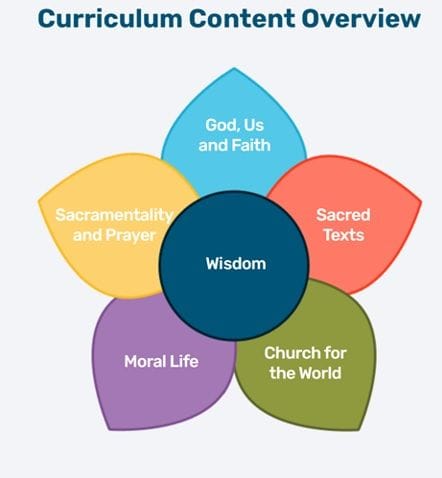Roman Catholicism, as one of the principal branches of Christianity, encompasses a rich tapestry of beliefs, traditions, and a robust ecclesiastical hierarchy. It is a faith characterized by adherence to the sacraments, the authority of the Pope, and a rich historical lineage that spans nearly two millennia. To understand what it means to be Roman Catholic is to delve into its doctrinal truths, cultural expressions, and the profound implications of its teachings on the lives of millions around the globe.
At the heart of Roman Catholic identity lies the notion of the Church as a sacramental community. Founded on the teachings of Jesus Christ and the apostolic tradition, the Roman Catholic Church perceives itself as the custodian of the sacred mysteries. The sacraments, such as Baptism, Eucharist, and Confirmation, serve as vital vehicles through which divine grace is conferred upon believers. Each sacrament embodies an outward sign of inward grace, reinforcing the Catholic belief in the tangible presence of God in the world.
The role of the Pope is perhaps one of the most distinctive features of Roman Catholicism. As the Bishop of Rome, the Pope is seen as the spiritual leader and a symbol of unity among Catholics worldwide. The doctrine of papal infallibility, established during the First Vatican Council in 1870, asserts that the Pope, when speaking ex cathedra on matters of faith and morals, is preserved from error. This belief in the Pope’s authority serves to anchor the faith of the laity and promotes uniformity in belief and practice across disparate cultures.
Another foundational aspect of Roman Catholic belief is the profound reverence for the Virgin Mary and the saints. Catholics believe that Mary, the mother of Jesus, holds a unique position in the divine order, as the Theotokos, or “God-bearer.” Her role is seen not only as the pivotal figure in salvation history but also as a compassionate intercessor who brings the petitions of the faithful before her Son. Similarly, the communion of saints—the spiritual solidarity among believers, both living and deceased—fosters a sense of continuity through prayer and veneration.
Moreover, the moral teachings of the Church derive from a long-standing tradition of ethical understanding, rooted in Scripture and the natural law. The Church espouses a moral framework that emphasizes dignity, respect for life, and the pursuit of social justice. Issues such as the sanctity of human life, the importance of marriage and family, and a commitment to the poor reflect the Church’s response to contemporary societal challenges. This moral stance is often a point of contention, provoking debate and, at times, alienation among those who interpret the world through a different lens.
Cultural expressions of Roman Catholicism further illustrate its rich identity. From the majestic architecture of cathedrals to the ethereal beauty of sacred music, the Church’s aesthetic contributions are profound. The liturgical calendar encapsulates the rhythm of Catholic worship, marked by seasons of penance, joy, and reflection. Religious festivals, such as Christmas and Easter, serve not only as celebrations of Christ’s Nativity and Resurrection but also as communal events that bind parishioners closely to their faith and each other.
Yet, the global nature of Roman Catholicism also invites a plethora of interpretations and experiences. In countries such as Brazil, Mexico, and the Philippines, Catholicism is interwoven with indigenous traditions and local customs, creating distinct expressions of faith that enhance the universal doctrine of the Church. This cultural adaptability, while maintaining its core teachings, demonstrates both the potential for inclusiveness and the challenges posed by syncretism—a juxtaposition that scholars frequently explore. The contrast between universal norms and local customs encapsulates a dynamic interplay that is pivotal for understanding Catholic identity in an increasingly pluralistic world.
The Roman Catholic Church also grapples with the complexities of modernity. The challenges posed by secularism, scientific advancements, and moral relativism have prompted a reevaluation of how the Church engages with contemporary society. The Second Vatican Council, convened in the 1960s, initiated a process of modernization that sought to bridge the gap between the Church and the modern world. The call for increased lay participation and interfaith dialogue reflects an acknowledgment of the diverse realities encountered by contemporary Catholics.
In the context of a world marked by fragmentation, the Roman Catholic Church’s commitment to social teaching calls for reconciliation and healing. The emphasis on the common good, solidarity, and stewardship of creation transcends national and cultural boundaries. By promoting dialogue and cooperation among all faiths and philosophical orientations, the Church seeks to respond to the existential questions that plague humanity: what it means to live in harmony, to pursue peace, and to seek justice.
In summation, the Roman Catholic Church stands as a formidable presence in the tapestry of global Christianity, characterized by a profound belief system, rich traditions, and a deep commitment to the moral and social fabric of society. Understanding what it means to be Roman Catholic is not merely an academic exercise; it is an invitation to engage with the complexities of faith, identity, and humanity itself. The continuity of beliefs, coupled with an ever-evolving relationship with the world, illuminates a path forward—one that offers both solace and challenge in the quest for spiritual authenticity.



